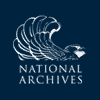To George Washington from Colonel Silvanus Seely, 11 November 1779
From Colonel Silvanus Seely
E[lizabeth] Town [N.J.] Novr 11th 1779
Sir
By accounts Just Recievd I have the following Perticulars.
Five Thousand of the Brittish and Hessians to be stationed on Statton Iseland (the lattor Building Huts Neare the waughtering Place) Two fortifycations are to be built—one on the Heightts neare Deckarts Ferrey and one on the west End of the Isiland.
Four Brigades are on thare march to South Hampton whare it is said they are to winter.1
Morrises Core Cathcarts Leigon and Robartsons2 are Stationed at Jerico on Long Iseland.
Great Part of the Troops that Came from Rhoad Iseland have fell Down to the waughtering Place the 7th Instant3 and are bound to Halifax under Convoy of the Dilawar Frigat4—the Hessians that Came from Rhoad Iseland have Relievd the Hessian Granadiers on Statton Iseland who have Imbarkd and ly with Those that fell Down the 7th.
Thare is a larg number more exspected to imbark Shortly said to be going for the Southward.5
The above accounts (I believe) may be Depended on, as they Came from an oald Corrispondent6—I have the Honour to Subscribe my Self your Exelencies Most Obedient Humble Servt
Silvanus Seely Coll
ALS, DLC:GW.
1. Hessian major Carl Leopold Baurmeister described the “Distribution for Winter Quarters” of British forces around New York City, including Staten and Long islands, in his dispatch dated 8 Nov. ( 318–20).
2. Seely is referring to the 2d Battalion of the New Jersey Volunteers under Lt. Col. John Morris, Col. William Schaw Cathcart’s British Legion, and Col. Beverly Robinson’s Loyal American Regiment, all Loyalist commands.
John Morris (born c.1735) served as an ensign and lieutenant in the British army during the French and Indian War. He became lieutenant colonel of the 2d Battalion of the New Jersey Volunteers in December 1776 and remained with this Loyalist unit until 1782. For further details, see 146–47.
3. For the British evacuation of Rhode Island on 25 Oct., see GW to Duportail and Alexander Hamilton, 30 Oct., and notes 1 and 2 to that document. For the distribution of these troops, and the assignment of only one Hessian regiment to Staten Island, see John Sullivan’s first letter to GW, 6 Nov., n.2.
4. Gen. Henry Clinton decided not to send troops to Halifax (see Samuel Culper, Jr., to John Bolton, 29 Oct., n.5, printed as an enclosure with Benjamin Tallmadge to GW, 1 Nov.).
5. The major British expedition to Charleston, S.C., would not embark until late December (see Anthony Wayne to GW, 26 Dec., source note). For a British fleet then preparing to leave New York City for Cork, Ireland, see Wayne to GW, 9 Nov., and n.4 to that document.
6. GW replied to Seely from West Point on 14 Nov.: “I have recd your favr of the 11th and am obliged by the intelligence it contains. Should you obtain a confirmation be pleased to inform me and of the time which the fleet sails. Should the other embarkation which you mention take place, I shall be obliged to you for endeavouring to know of what Corps it is composed” (LS, in Tench Tilghman’s writing, in private hands; Df, DLC:GW; Varick transcript, DLC:GW. GW signed the cover of the LS).
Allegations that Seely participated in illegal trade with New York led to his removal from command at Elizabeth later in November (see William Livingston to Seely, 26 Nov., in 3:233–34; see also GW to Samuel Huntington, 25 Dec., n.1). A court-martial subsequently acquitted Seely (see Livingston to Abraham Clark, 1 Feb. 1780, and Livingston’s approval of the courtmartial findings, 27 May 1780, in 3:294, 398–99).

![University of Virginia Press [link will open in a new window] University of Virginia Press](/lib/media/rotunda-white-on-blue.png)
